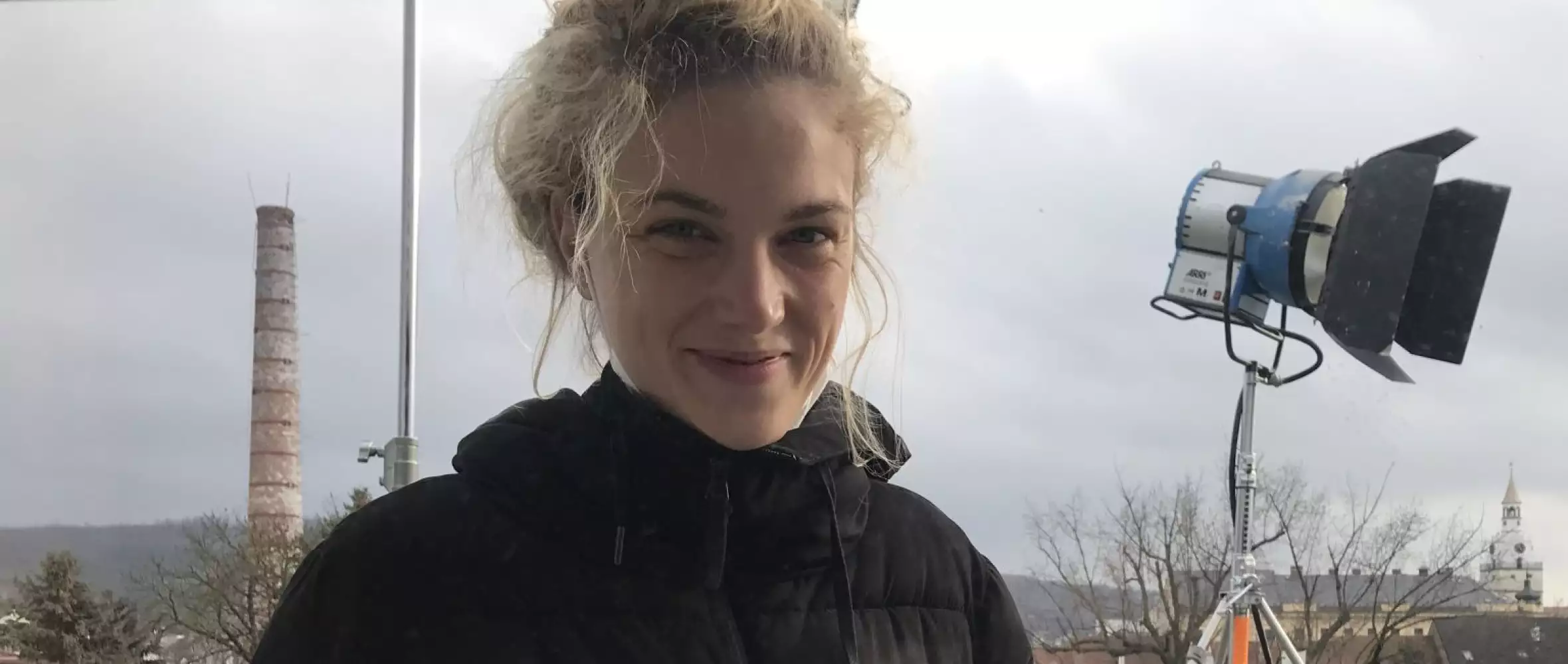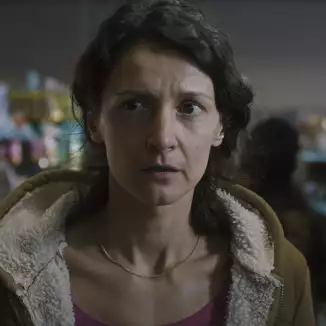
24 July 2023
It takes so little and the feeling remains
It takes so little and the feeling remains

Production designer Stella Šonková (*1992) originally studied theater set design at JAMU, but during a TV and Film Set Design internship at the University of South Wales, she switched to film. She worked on the drama Victim, premiered in Venice, the miniseries Suspicion, screened at last year's Berlinale, and A Sensitive Person, which competed in Karlovy Vary this year. Šonková is currently working on Ondřej Hudeček's comedy Little Thief.
Interview by Vojtěch Rynda for CZECH FILM / Fall 2023
On your website stella-sonkova.com, you write that you focus on characters' backstories when creating visual worlds. How does that work?
To be able to create an apartment for a character, I need to know his or her history, even if it isn't revealed in the film. I need to know who the character is – a lawyer, a divorcee, how long he or she has lived at that place, if he or she has a new partner, a child... Only then can I tell the prop people what we're looking for in the apartment, so that it doesn't feel generic. Other times, the key to the film is more abstract. While reading the script, a certain color scheme, mood, or reference image comes to my mind.
While A Sensitive Person has a dreamlike, whimsical quality, Suspicion and Victim are realistic crime stories set in a particular social environment. Which approach do you prefer?
The most important thing for me is if I like the script. I can enjoy both; I find it refreshing to work with different genres. Sometimes it's good to stick closely to the script and the characters' backstories, while other times it's nice to create more freely. It's like acting. Sometimes characters draw attention to themselves, and sometimes they're more in the background, subtly supporting the action. In Victim, I stayed very close to the main character, Irina, and her dilemmas, while in A Sensitive Person, the script evoked certain images in me that I immediately sketched. They look very different from the final film, but it's great to let your imagination run wild.
Isn't it frustrating that the result always looks different?
Not really, it's just a process. The references that came to my mind while reading A Sensitive Person stayed with me until the end, and I kept coming back to them – the photographs of Richard Billingham or Martin Parr, for example. And the film locations you find also have a big influence. In A Sensitive Person, for example, there's a scene in which a father and son are hiding in a cemetery where some motorcyclists – the bad guys – show up. I drew a whole map of that situation, but there wasn't room in the film to analyze how they got there; the main thing is that it created a sense of menace, and that's crucial for me. I used to share a studio with some architects who were amazed that I enjoyed doing something as ephemeral as film production design while they were building houses. But the feeling of the film remains. If I put brocade curtains behind the two of us during this conversation, it would look like we were in a palace. It takes so little, and the illusion lasts forever.
What was interesting for you in creating the environment for the characters in Suspicion and Victim?
Hana from Suspicion is an overworked nurse who treats people unpleasantly. Rationally, we understand her, but we don't like her very much. At the same time, she tries to create her own world in the house she's renovating. We should feel comfortable in her house, but we don't. I've connected this world with purple – including the details, like the purple glasses Hana wears. The institutions she moves through are green and yellow. Victim, which is about the problematic coexistence of Czechs, Ukrainians, and Roma, has a different visual key. We chose a different color scheme for each ethnic group, and then Irina goes through her dilemmas and evolves into a conformist blue-gray. Sometimes I create a feeling through the character, sometimes through an action that is supposed to happen in a certain scene or location.
How did you come to work as supervising art director on the series Familier som vores, directed by Thomas Vinterberg?
It was shot in the Czech Republic, among other places, with the involvement of the Czech production company Sirena Film. Producer Pavel Müller of Sirena thought I would get along well with production designer Sabine Hviid, who had worked with Vinterberg on Another Round. In some ways we have a different approach, but at the same time we share a similar way of thinking about production design. For example, we both prefer to look for real locations, inhabited spaces, and we are willing to spend a lot of time on it. I hope we were a good match.
So how do you scout out locations?
I enjoy looking for them and then coming up with specific solutions within a budget. For example, we've already picked out a prime location and we can no longer move to another city, so where can we find something that looks like an English backyard? Do we build it? Do we commute? It's a combinatorics that involves locations, people, money, time... I enjoy discussing it all with the producers and finding solutions.
You have recently been working in Moravia on the heist comedy Little Thief by Ondřej Hudeček, author of Peacock and Nagano Tapes. Is this the first time you have worked with this genre?
Yes. Ondřej is from South Moravia and he wrote the script to fit that region, which is flat and dry. That's why we chose a kind of western aesthetic that fits the environment. I had to watch a lot of heist comedies, and the action scenes were also new to me. We had to create them to look good, but also to be safe and be within the budget.
You have dozens of commercials in your filmography. What do they mean to you?
One more university. I studied film set design at DAMU, where you can create freely without being limited by production, and at the same time I made short films with my fellow students at FAMU.
Commercials taught me how to find certain craft solutions, like how to design and build a chocolate factory in three weeks. I certainly don't get the same satisfaction from making commercials as I do from helping to tell a story in a film, but I have learned how to work with the viewers' different perceptions – for example, how to show them in a second that they are in a garage and who owns the garage.
You are a member of the Production Designers Collective. What does that mean?
It's a global organization of production designers, whether they're making indie arthouse films or blockbusters. We recently had a meeting in Greece for a few days. Some of the idols of our industry were there, like Grant Major, who won an Oscar for Lord of the Rings, and Rick Carter, who got one for Avatar. It was historically the first global gathering of production designers. We talked about stories, inspiration, the latest technologies, the structure of the art department, sustainability, unions, and the joys and pitfalls of our profession. It was nice to hear that we're all dealing with the same things, just on a different scale. I am sure that sharing experiences like this is very beneficial for all participants and for the field itself.
Related films
A Sensitive Person
A boy and his father, both dressed up as women, run across a dystopian landscape where people are filled with frustration and fear. To maintain his childhood ideals and become a truly sensitive person, the boy has to stand up to…
Victim
When the son of Ukrainian immigrant Irina is attacked, the whole city stands up in solidarity with her family and condemns their Roma neighbors, who allegedly committed the crime. But soon another truth starts to emerge. Victim…
Related people
Stella Šonková
Set Designer



